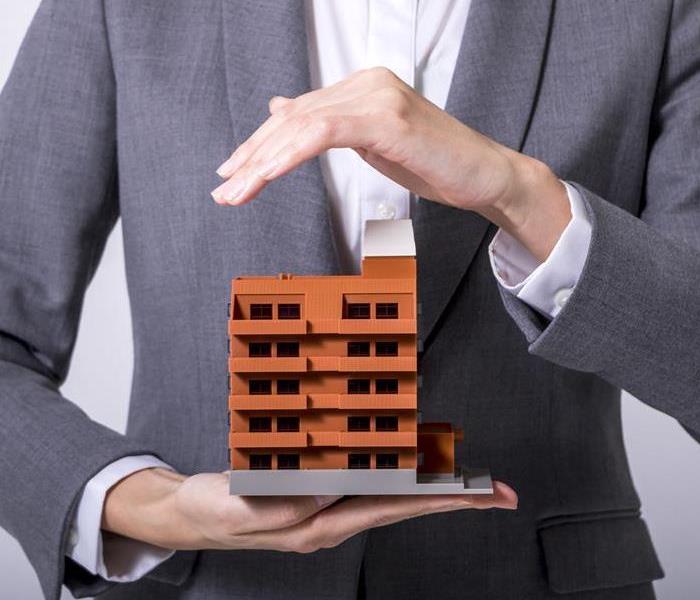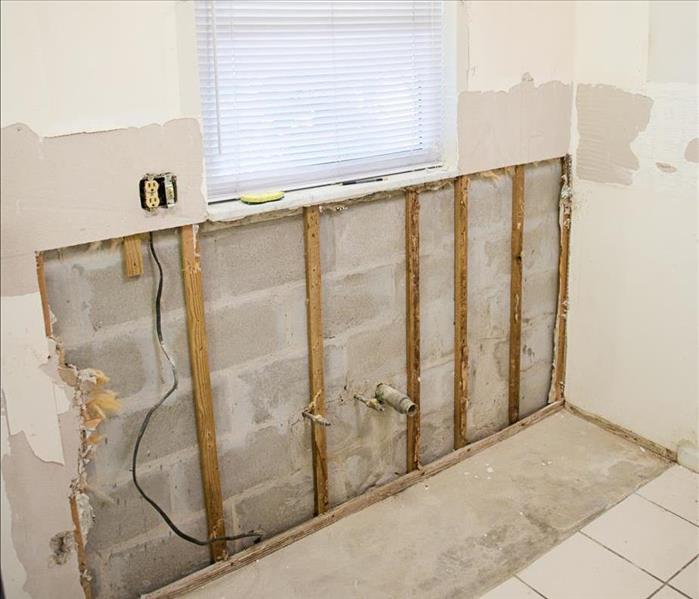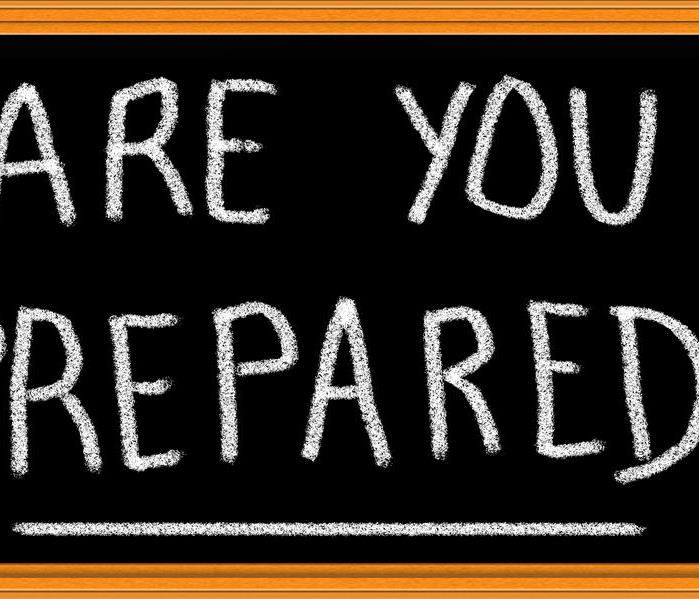Recent Water Damage Posts
Water Damage and Homeowners Insurance: Navigating the Claims Process
10/18/2023 (Permalink)
 Understanding what your insurance policy covers incase of a restoration emergency is important to navigate the claims process.
Understanding what your insurance policy covers incase of a restoration emergency is important to navigate the claims process.
Homeowners insurance is designed to protect your home in the event of unforeseen damage, including damage from water. Water damage can be a costly and stressful experience, and it's essential to understand the ins and outs of your insurance policy and the claims process to ensure you receive the coverage you need. In this blog post, we'll discuss how homeowners insurance covers water damage, what steps to take when filing a claim, and helpful tips to navigate the claims process.
Understanding Water Damage Coverage in Homeowners Insurance
Homeowners insurance typically covers water damage that results from "sudden and accidental" events, such as burst pipes, severe storms, or an overflowing washing machine. However, coverage can vary depending on what particular insurance policy you hold. It's crucial to review your policy and understand the extent of your coverage to avoid any surprises in the event of water damage.
Steps to Take When Filing a Water Damage Insurance Claim
First and foremost, assess the extent of the water damage to your property. Take pictures and document the damage as thoroughly as possible. This will help when filing a claim and serve as evidence of the extent of the damage.
- Contact Your Insurance Provider
Contact your homeowner's insurance provider as soon as possible after a water damage event occurs. Provide them with details of the damage, including the cause, when it happened and the extent of the damage.
- Provide Additional Information
Your insurance provider will likely need additional information to process your claim. Be prepared to provide documentation of your insurance policy, including proof of ownership and any applicable receipts for repairs.
Mitigation refers to any actions taken to prevent further damage to your home after the initial water damage event occurred. For instance, if possible, shut off the water supply or remove excess water. Keep all receipts for materials and services rendered for mitigation as they could be factored into your insurance coverage.
Once you've filed your claim, an adjuster from your insurance provider will visit your home to assess the damage. Work with them to provide access to your property and the necessary documentation, including estimates for repairs and receipts.
- Review the Settlement Offer
After the adjuster inspects the damage, your insurance company will offer a settlement based on your policy's coverage. Review the settlement offer carefully to ensure it covers all the damages. Be prepared to negotiate, ask questions, and adjust the settlement if needed.
Helpful Tips for Navigating the Claims Process
- Take pictures and document the extent of the damage.
- Contact your insurance company immediately after the damage occurs.
- Keep receipts for any mitigation that occurs and any other expenses related to the claim.
- Be prepared to provide documentation of your insurance policy, such as proof of ownership and policy numbers.
- Work with the adjuster and ask questions to ensure you understand the coverage of your policy and the settlement offer.
In conclusion, understanding the coverage and claims process of your homeowner's insurance policy is essential in the event of water damage. By following the steps noted above and working closely with your insurance provider, you can navigate the claims process successfully and receive the coverage you need to repair and restore your home.
Overflowed Toilet? Here's What You Need to Do to Minimize the Damage
3/15/2023 (Permalink)
 Whether it's due to a clogged toilet or a malfunctioning valve, a toilet overflow can cause significant water damage to your home or business.
Whether it's due to a clogged toilet or a malfunctioning valve, a toilet overflow can cause significant water damage to your home or business.
A toilet overflow can be a messy and stressful situation for any homeowner. Whether it's due to a clogged toilet or a malfunctioning valve, a toilet overflow can cause significant water damage to your floors, walls, and furniture. In this blog, we will discuss what to do in the event of a toilet overflow.
Toilet overflows can happen due to a variety of reasons, ranging from minor issues to more significant problems. One common cause of a toilet overflow is a clog in the pipes or drain. This can be caused by flushing items that should not be flushed down the toilet, such as feminine hygiene products, baby wipes, or excessive amounts of toilet paper. Another cause of toilet overflow is a malfunctioning valve, which may not properly regulate the water flow into the toilet bowl. Other issues that can cause a toilet overflow include a damaged sewer line, a blocked vent stack, or a damaged flapper valve. It is important to address the cause of the toilet overflow to prevent future incidents and avoid water damage to your home.
Step 1: Stop the Water Flow
The first thing you should do in the event of a toilet overflow is to stop the water flow. Locate the valve behind the toilet and turn it off to stop the water supply. If you can't find the valve, turn off the main water supply to your home. This will prevent any additional water from flowing into the toilet and causing more damage.
Step 2: Protect Yourself
Toilet water can contain bacteria and other harmful microorganisms. It is important to protect yourself by wearing gloves and other personal protective equipment. If the overflow is severe, you should also consider wearing a mask to avoid inhaling any harmful particles.
Step 3: Remove Excess Water
Using a wet/dry vacuum or towels, remove as much excess water as possible. Start by soaking up the water on the floor and then move on to the walls and furniture. Be sure to dispose of any towels or rags that come into contact with the contaminated water.
Step 4: Clean and Disinfect
After removing the excess water, it's time to clean and disinfect the affected area. Use an appropriate cleaning solution to disinfect the surfaces that have come into contact with the contaminated water. Make sure to follow the manufacturer's instructions and wear protective gloves while cleaning.
Step 5: Dry the Area
After cleaning and disinfecting the area, it's important to dry it as quickly as possible to prevent mold growth. Use fans and dehumidifiers to dry out the affected area. Open windows and doors to increase ventilation and reduce humidity.
Step 6: Call a Professional
If the overflow is severe or you are unable to handle the situation on your own, it's important to call a professional restoration company. They have the expertise and equipment to handle the situation and prevent further damage. Companies like SERVPRO of River Oaks can assist you with all your water damage cleanup needs!
In conclusion, a toilet overflow can be a stressful and messy situation. However, by following these steps, you can minimize the damage and prevent the growth of harmful microorganisms. Remember, if the overflow is severe, it's always best to call a professional restoration company to handle the situation.
Be Prepared for A Water Damage Emergency
2/13/2023 (Permalink)
 This blog will help you prepare for the unexpected.
This blog will help you prepare for the unexpected.
If you've ever experienced a flooding or water damage emergency, you know how important it is to be prepared. When you're caught off-guard, it can be hard to know who to call and what steps to take next. This blog will help you prepare for the unexpected so that when there's an emergency, you'll be ready with a plan of action in place.
Choose the Right Insurance
You may be wondering whether you need insurance and, if so, how to choose the right policy. Insurance is a good idea because it can help you get back on your feet after an emergency has occurred. When you have water damage and severe flooding in your home or business, insurance can help pay for damages by covering the cost of repairs or paying for temporary housing.
Document your valuables
After a water loss, take photos of your valuables and all areas of the home that have been damaged by water, including closets and cabinets. Take photos of any clean-up processes that are being done to restore your home to its preloss condition. It is always a good idea to document all damage and cleanup processes for your insurance company. Document all expenses to ensure you get reimbursement for your insurance if needed.
Protect your Property
If you have a basement, it is vital that you take every precaution to ensure your property doesn't sustain damage during a flood. The following suggestions will provide some ways to protect your home:
- Install a dehumidifier to remove moisture from the air. If there is already water in your basement and the humidity level is above 60%, it's important that you get the humidity level down as quickly as possible by using a dehumidifier in combination with other methods.
- Use fans to circulate air throughout your property. This will prevent mold growth and help dry out any dampness that might still be present after using the dehumidifier below ground level.
- Keep a bucket at hand in case of leakage when installing new appliances such as washing machines or dishwashers which may cause flooding if not installed correctly!
- Use a sump pump. This will drain excess water from basements before there is a chance too much damage has been done.
Emergency Food & Supplied
Have nonperishable food stored in case of an emergency. Always have bottled water and first aid kits to ensure you have the right things in case of an injury in an emergency situation. It is also a good idea to have blankets and extra clothing in all in a secure place.
Having a plan in place in case of any future water damage emergencies and protecting your property in the event of one is crucial to keeping your family safe. If you’re interested in adding a little more protection to your home, consider reaching out to your insurance company and ensure you have a plan and safety items in place in case of an emergency.
Why Basic Appliances Leak Water
1/20/2022 (Permalink)
Why Home Appliances leak water
Where is water, there is also a possibility for a leak. And although nobody likes to point the finger, there are some home appliances responsible for leaks. Take your washing machine, freezer, dishwasher, and refrigerator for example. They all have some relation to water. They are either connected to the water supply or refrigerate it to keep food cold.
When appliances leak, the water ends up on the floor. Although water damage is not as catastrophic as if the plumbing pipes burst, you will still deal with a serious problem. First of all, you will need to do appliance repairs to fix the problem. And this is not easy. Take your washer for instance. The failure, which has caused the leak, might be associated with a broken or worn rubber tube, overflow tube, drum, seal, or drain hose based on the appliance’s type. So there is no doubt that you will need an appliance service technician to determine and fix the problem. But then again, it’s a matter of your floor damage. Can you imagine having laminate in the flooded kitchen? Chances are you might need to replace or at least repair it.
Indoor and Outdoor Leaks
1/20/2022 (Permalink)
Leaks Can Run, but They Can't Hide
Are you ready to chase down leaks? Household leaks can waste nearly 1 trillion gallons of water annually nationwide. You can find and fix leaks inside and outside your home to save valuable water and money all year long.
Outdoor Leaks
If you have an in-ground irrigation system, check it each spring before use to make sure it wasn’t damaged by frost or freezing. An irrigation system that has a leak 1/32nd of an inch in diameter (about the thickness of a dime) can waste about 6,300 gallons of water per month.
Leaks still Flowing?
If you've already determined you have leaks and you find these step-by-step solutions aren't enough to stop them, it might be time to replace your leaking fixtures. When you consult with a plumbing professional, and look for the Water Sense label when considering a new toilet, faucet, or showerhead, you could increase your home's water efficiency.
Don't Mistreat Your Home Drains
1/20/2022 (Permalink)
Home water damage can lead to unnecessary stress and thousands of dollars in repairs. Although you cannot prepare for all plumbing-related accidents, there are some steps you can take to reduce the chances of a flooding due to mishaps, damage or neglect in your home. Keeping an eye on potential sources of leaks is just one of the many steps you can take to prevent home water damage.
Treat Your Drains Well
Improperly using your drains can lead to backups and flooding. In the kitchen, do not depend on your garbage disposal to grind up food pieces that could potentially get stuck in your pipes (e.g. pasta, egg shells, fibrous foods); simply throw these items away or put them in a compost bin. Grease and oils should never go down the drain. In the bathroom, use hair catchers to prevent hair from going down the drain and creating a clog.
Preventing home water damage can save you from both stress and money problems. Good prevention starts by becoming more aware of your home’s plumbing and appliances.
Signs You Have Or Are Going To Have Water Damage
1/20/2022 (Permalink)
Wetness in the Cabinet
The only things you want hidden in your bathroom cabinet are extra rolls of toilet paper and cleaning products. But finding water or moisture in there is a sign of a hidden leak. It might be an easy fix, like tightening a nut, but it could also be a sign a valve needs replacing.
Damaged Flooring
If your bathroom floor is buckling, cracking, or beginning to stain—and you didn’t let the bathtub overflow—odds are you have a leak. The water could be from a pipe directly underneath the floor, or it could have traveled there from another area.
You might notice the floor feels soft or spongy. You might even be able to pick up a tile right off the floor. Either way, it needs to get fixed to prevent any further damage.
 Understanding what your insurance policy covers incase of a restoration emergency is important to navigate the claims process.
Understanding what your insurance policy covers incase of a restoration emergency is important to navigate the claims process.

 24/7 Emergency Service
24/7 Emergency Service

